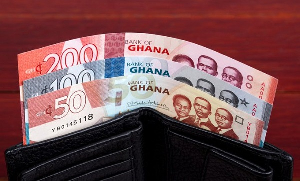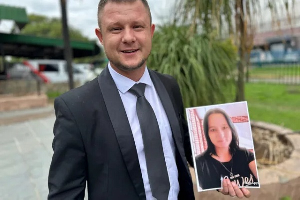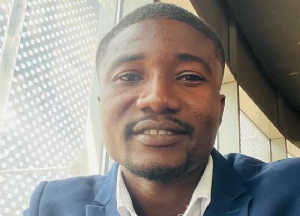As we all know, the court action taken to challenge the outcome of the December 2012 Presidential Election generated widespread and unprecedented public interest in the operation of the Supreme Court of Ghana specifically and, more generally, the Ghanaian judicial system.
This historic court action stimulated the public’s appetite for knowledge about the judicial process in Ghana and thus presented an opportunity for enlightened journalism on the case, which has led to this illuminating book.
Legal Landmark
The Presidential Election Petition of 2012-13 was in itself a legal landmark, which deserved chronicling. The concatenation of circumstances outlined above laid the foundation for a book of the kind written by Mabel Aku Baneseh, a celebrated journalist, the 2013 Ghanaian Journalist of the Year. It is written with admirable skill.
The book, 10 chapters, is written in language that is comprehensible to the average member of the public and illustrated with relevant photographs and cartoons. It is thus an easy read, which nevertheless communicates effectively the facts needed for an appreciation of the case. It clearly serves the journalistic purpose of its author, namely, to keep us accurately informed about the case and thus to be able to discuss knowledgeably the issues arising from the PINK SHEETS, made famous by the case.
After a very positive Foreword by the Chief Justice and a Preface and Prologue by the author, Chapter 1 narrates the basic facts about the petition and the role played in relation to it by the media, “party bigwigs” and others. It sets out the purpose of the book as being to chronicle the proceedings on the petition and to walk readers through what transpired before, during and after the petition.
Chapter 2 fast-forwards to August 29, 2013, by crafting a cameo of the Supreme Court sitting on the day judgment was given. The author conveys the public’s surprise at the brevity of the actual delivery of the decision of the court by the Presiding Justice. (The actual texts of the nine individual judgments written by the Justices were made available a few days later). The author, however, observes that “Congratulatory messages to parties in the case and for Ghana’s fledgling democracy poured in from around the world. It was a moment of pride and excitement for Ghanaians, most of whom had anticipated any eventuality including possible violence.”
The Long Journey
Chapter 3 summarises the legal addresses filed by counsel for the parties, while in the short Chapter 4, entitled “The Long Journey,” the author recalls the excitement of the nation from April 16, 2013 to August 14, 2013, when the proceedings of the Supreme Court were transmitted live on television and radio to the nation.
Chapter 5, entitled “A Walk Through Events”, sets out a chronology of the events relating to the filing and hearing of the petition. Some of the events are described in more detail than others. However, the overall effect of this long Chapter is to provide a relatively comprehensive narration of the unfolding of the case.
Chapter 6 chronicles events on the day of judgment, August 29, 2013.
Chapter 7 is entitled “Concession Speeches” and contains the concession speech of Nana Addo Dankwa Akufo-Addo and a speech by President John Mahama after the delivery of the Supreme Court’s decision. It is convenient for the general public to have these two speeches readily available through this book. The President in his speech notes that: “We have all been captivated by the proceedings, and it is with awe that we have watched the advancement of the jurisprudence of the Supreme Court of Ghana. We have also, in the process, managed to turn ourselves into a nation of pocket lawyers and armchair judges, and, in typical Ghanaian fashion, let the language of law enter our daily vocabulary.”
Gratitude
Mr Akufo-Addo, in his speech, said: “…while I disagree with the court’s decision, I accept it. I accept that what the court says brings finality to the election dispute. We shall not be asking for a review of the verdict so we can all move on in the interest of our nation.”
Chapter 8 contains summaries of the opinions of the Justices who sat on the petition. This is a complex task and difficult to achieve. Chapter 9, entitled Critique, sets out criticisms of the opinions delivered by the Court. Criticisms expressed at the symposium organised by the Danquah Institute on September 25, 2013 are reproduced in this chapter.
Chapter 10 sets out some of the author’s personal experiences and reflections relating to her coverage of the petition. One of her conclusions is that:
“Law holds society together. A society cannot thrive without law because chaos and anarchy have never built any society. The role of the media in this regard is to safeguard the little peace and tranquillity in the country by supporting the judiciary and other state institutions to maintain law and order.”
She urges neutrality in journalists if they are to attain this goal.
This is a handy book of reference on the Presidential Election Petition, probably the most widely-known case in Ghana’s history. As the years advance and memories fade, its value will increase year by year. We owe a debt of gratitude to the hardworking journalist who has put it together. It is a thoroughly enjoyable read.
Opinions of Thursday, 3 December 2015
Columnist: Justice Samuel Kofi Date-Bah
Pink Sheets: The Story of Ghana’s Presidential election petition
Entertainment













